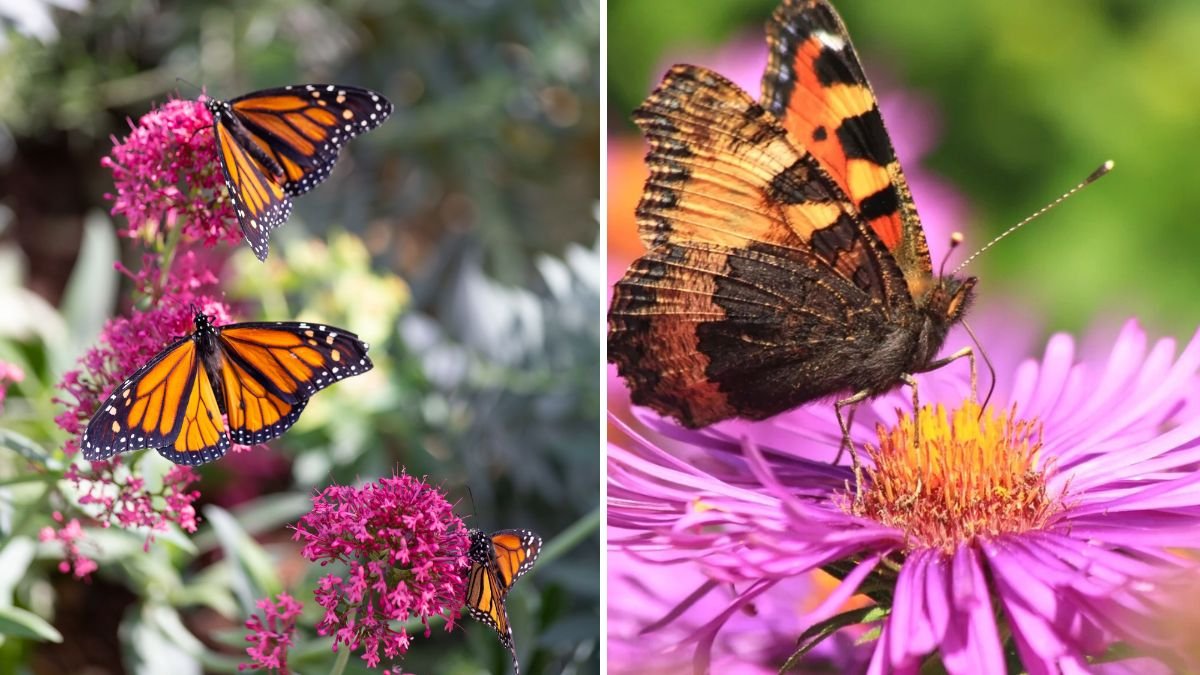As summer fades and the vibrant colors of autumn arrive, many gardeners worry that their flower beds will lose their charm. Yet fall is a critical season for pollinators like bees, butterflies, and hummingbirds, who are preparing for winter and still need nectar and pollen. By planting the right fall-blooming flowers, you can create a garden that supports pollinators, extends blooming seasons, and maintains a colorful landscape into late autumn.
This guide highlights the best flowers for attracting pollinators in fall, along with planting tips, care instructions, and ecological benefits.
1. Asters (Aster spp.)
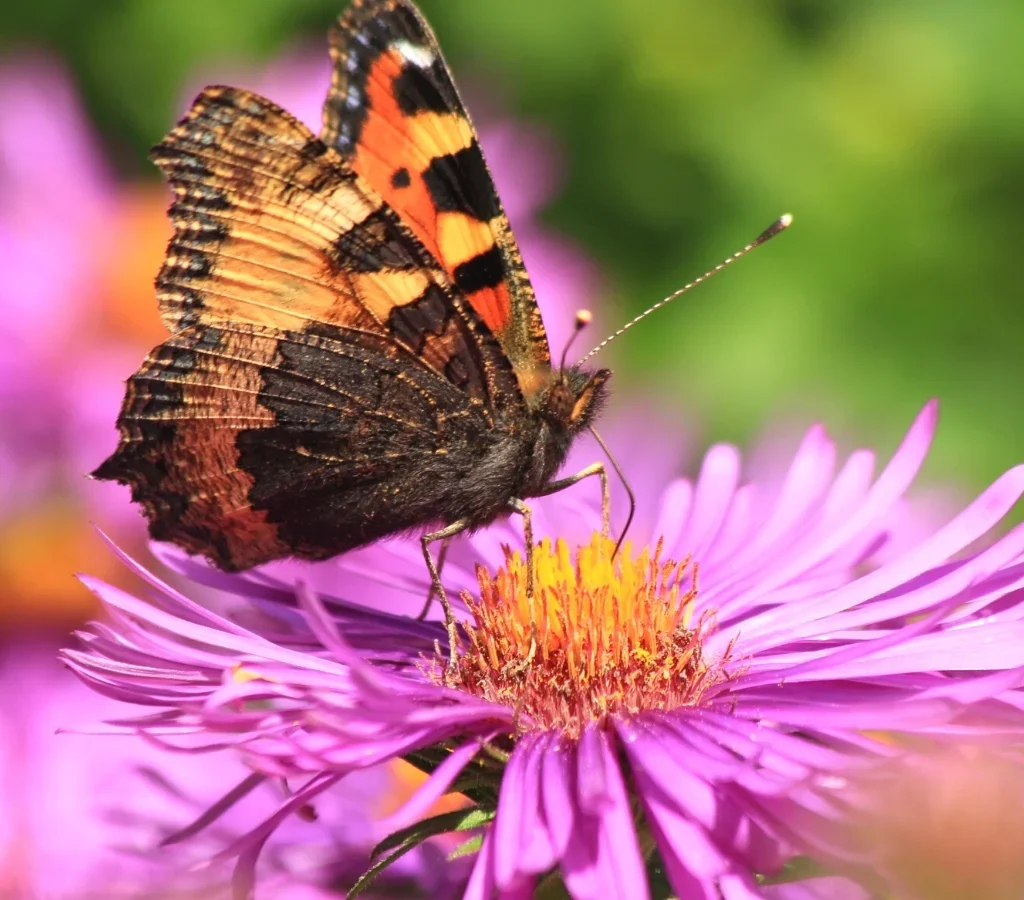
Why Pollinators Love Them
Asters are among the most important late-season nectar sources for pollinators. Bees, butterflies, and even some migratory hummingbirds rely on asters as they stock up on energy for winter.
Planting Tips
- Light: Full sun to partial shade.
- Soil: Well-draining, fertile soil.
- Watering: Regular watering; avoid soggy soil.
- Care: Deadhead spent flowers to prolong bloom and prevent self-seeding.
Bloom Time
- Late summer through fall, providing consistent nectar when other flowers decline.
Pro Tip: Plant asters in clusters to maximize pollinator attraction, as pollinators are drawn to large patches of blooms.
2. Sedum (Sedum ‘Autumn Joy’)
Why Pollinators Love Them
Sedum, particularly the variety known as Autumn Joy, produces dense clusters of tiny flowers that are rich in nectar. Bees and butterflies flock to these flowers, making them a late-season pollinator magnet.
Planting Tips
- Light: Full sun.
- Soil: Well-draining soil; tolerates poor soil.
- Watering: Low; drought-tolerant once established.
- Care: Cut back in early spring to encourage healthy new growth.
Bloom Time
- Late summer to early fall, offering nectar at a critical time for pollinators.
Pro Tip: Sedum’s flowers retain their nectar even after frost, providing food for pollinators later into the season.
3. Goldenrod (Solidago spp.)
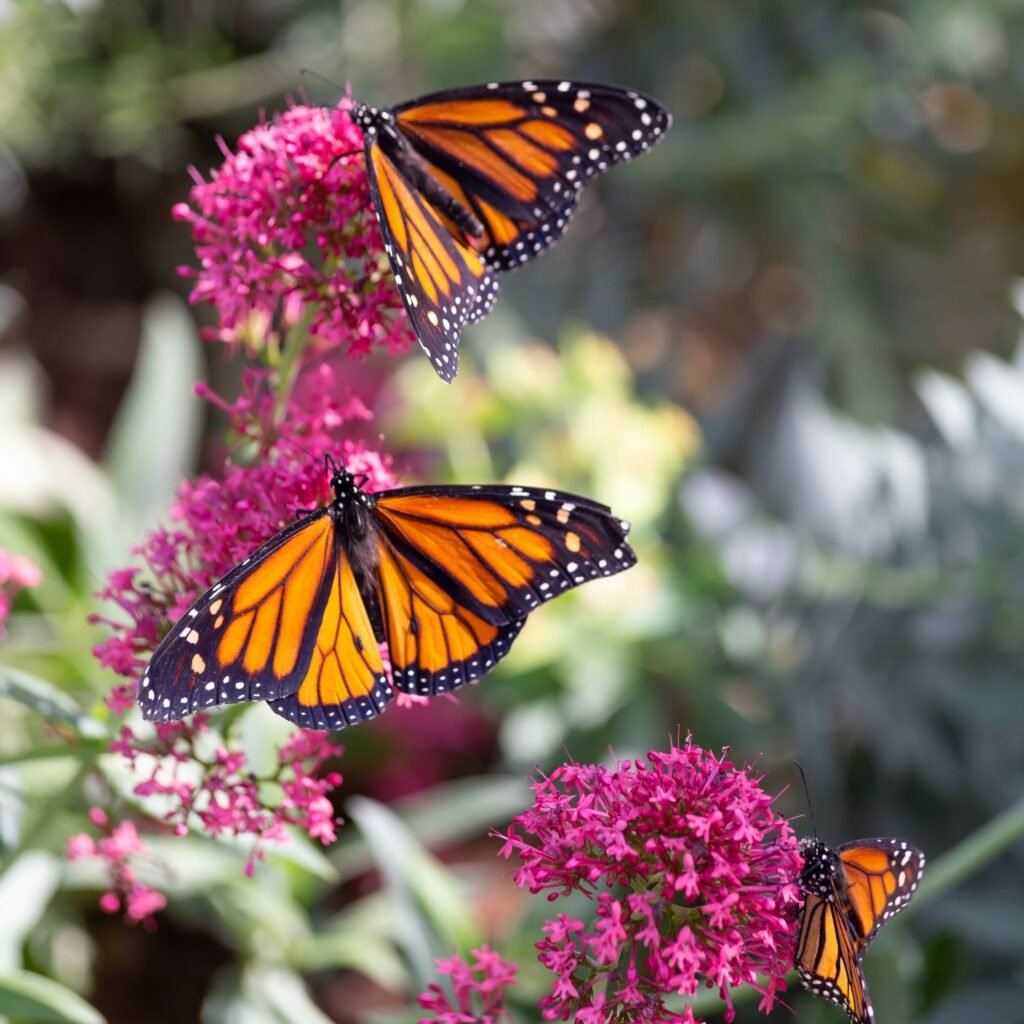
Why Pollinators Love Them
Goldenrod is often misunderstood as the culprit for fall allergies, but it is a critical nectar and pollen source for bees, butterflies, and other insects. Its tall, bright yellow blooms are highly visible and easy for pollinators to access.
Planting Tips
- Light: Full sun.
- Soil: Well-draining soil; adaptable to many soil types.
- Watering: Moderate; tolerant of dry conditions once established.
- Care: Cut back dead stems in late winter or early spring.
Bloom Time
- Late summer through fall, providing nectar when other flowers are dwindling.
Pro Tip: Goldenrod pairs beautifully with asters for a late-season pollinator-friendly garden.
4. Japanese Anemone (Anemone hupehensis)
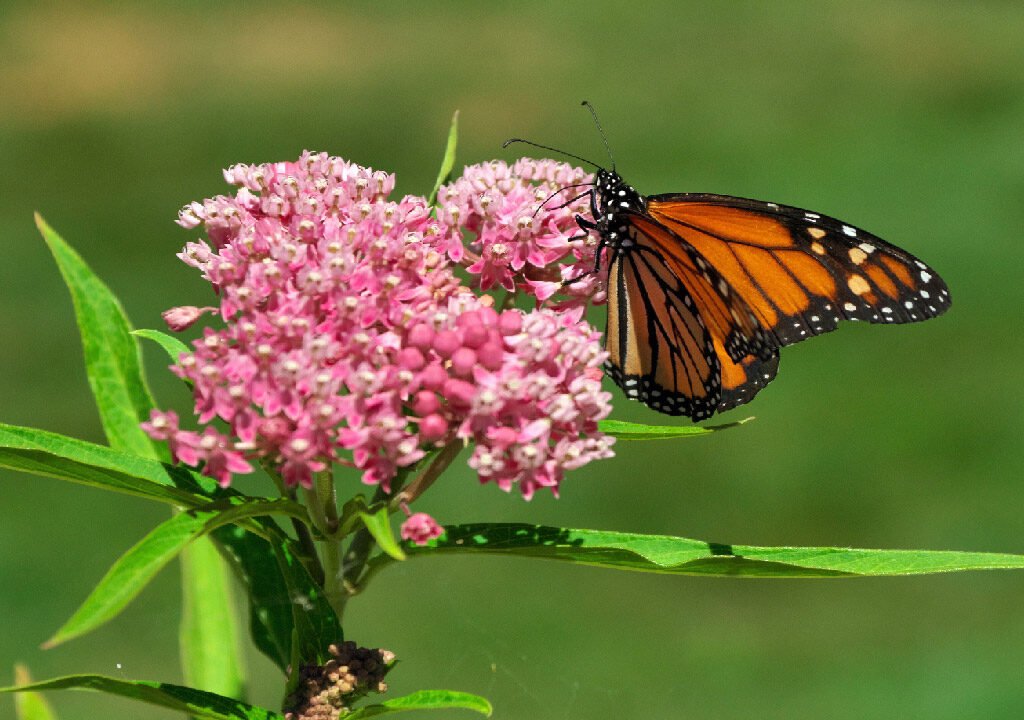
Why Pollinators Love Them
Japanese anemones produce delicate, open-faced flowers that are easy for bees and butterflies to access. Their late bloom period helps extend the pollinator season into autumn.
Planting Tips
- Light: Partial shade to full sun.
- Soil: Well-draining, fertile soil.
- Watering: Regular; keep soil consistently moist.
- Care: Mulch in winter to protect roots and cut back after flowering.
Bloom Time
- Late summer through early fall, complementing other autumn-blooming species.
Pro Tip: Japanese anemones tolerate cooler temperatures, making them ideal for early frost conditions.
5. Helenium (Helenium autumnale)
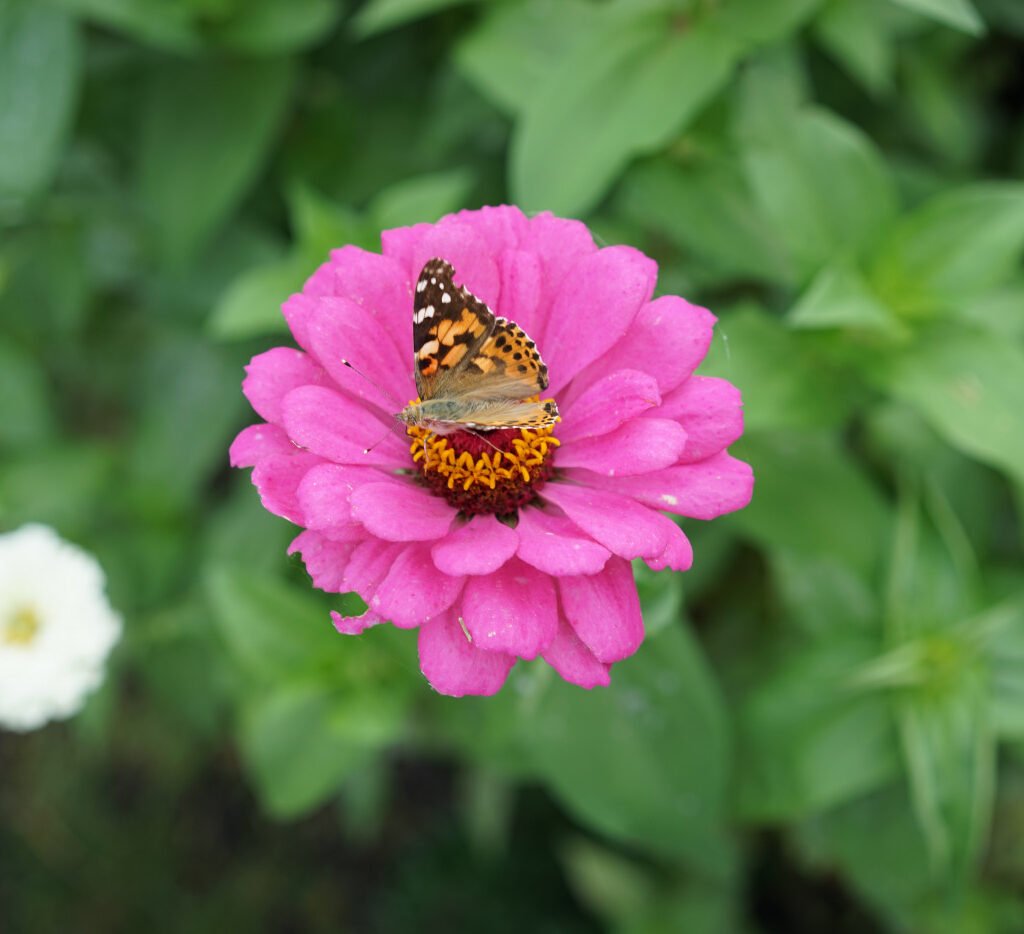
Why Pollinators Love Them
Helenium, also called sneezeweed, produces bright daisy-like flowers with large central disks full of pollen. Bees and butterflies are drawn to these vibrant, nectar-rich blooms, providing a late-season energy boost.
Planting Tips
- Light: Full sun.
- Soil: Moist, well-draining soil.
- Watering: Regular; avoid letting soil dry completely.
- Care: Deadhead regularly to prolong blooms.
Bloom Time
- Late summer to fall, ideal for filling gaps in a pollinator garden.
Pro Tip: Combine Helenium with goldenrod or asters for a continuous late-season nectar source.
6. Toad Lily (Tricyrtis spp.)
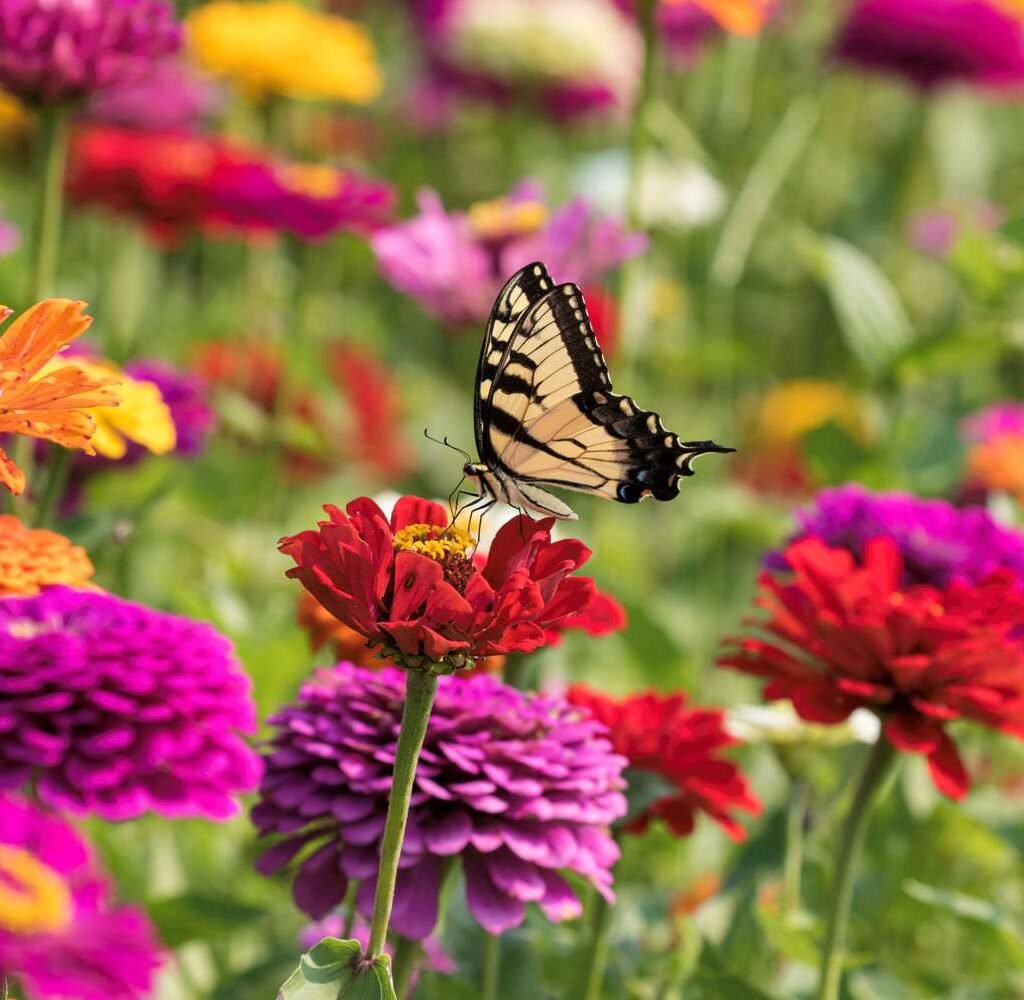
Why Pollinators Love Them
Toad lilies are exotic-looking flowers with spotted petals that bloom in the shade during fall. They attract bees and occasional butterflies, offering nectar when sun-loving flowers are past their prime.
Planting Tips
- Light: Partial to full shade.
- Soil: Moist, fertile, well-draining soil.
- Watering: Keep consistently moist; mulch helps retain moisture.
- Care: Divide clumps every few years to maintain vigor.
Bloom Time
- Late summer through fall, adding color to shaded areas while feeding pollinators.
Pro Tip: Plant toad lilies near pathways or shaded seating areas to enjoy their intricate beauty while supporting pollinators.
7. Sunflowers (Helianthus annuus – Fall Varieties)
Why Pollinators Love Them
Sunflowers are nectar and pollen powerhouses for bees and butterflies. While common summer varieties bloom early, certain fall-blooming sunflowers extend pollinator support into September and October.
Planting Tips
- Light: Full sun.
- Soil: Well-draining, fertile soil.
- Watering: Moderate; keep soil moist until established.
- Care: Remove spent blooms to encourage further flowering; support tall varieties with stakes.
Bloom Time
- Late summer to fall, providing bright, large flowers for pollinators to land on.
Pro Tip: Plant sunflowers in groups or clusters to attract more pollinators efficiently.
Designing a Pollinator-Friendly Fall Garden
To maximize pollinator attraction in fall:
- Plant in clusters: Pollinators are more likely to visit groups of the same flower.
- Mix bloom times: Combine early, mid, and late-blooming fall flowers to ensure continuous nectar supply.
- Include native plants: Native species are often the best food sources for local pollinators.
- Provide shelter: Include shrubs, grasses, or small trees to give pollinators protection from wind and predators.
- Avoid pesticides: Chemicals can harm beneficial insects; use organic solutions instead.
Pro Tip: A diverse garden with different heights, colors, and flower shapes supports a wider range of pollinators.
Benefits of Fall-Blooming Pollinator Flowers
- Supports local ecosystems: Bees, butterflies, and other insects are essential for pollination.
- Extends garden color: Fall-blooming flowers maintain visual appeal as summer plants fade.
- Provides seeds for wildlife: Flowers like sunflowers produce seeds that birds feed on later.
- Encourages biodiversity: Attracting pollinators supports a healthy, balanced garden ecosystem.
Pro Tip: Even a small garden or balcony can contribute to pollinator support when planted with the right fall flowers.
Final Thoughts
Fall is not the end of your garden’s productivity. By selecting asters, sedum, goldenrod, Japanese anemones, Helenium, toad lilies, and fall sunflowers, you can create a vibrant, pollinator-friendly garden well into autumn.
Key takeaways:
- Focus on nectar-rich, late-season blooms to feed pollinators.
- Plant in clusters and mix species for continuous color and food.
- Incorporate both sunny and shaded areas for a variety of pollinators.
- Maintain your garden without pesticides for the health and safety of pollinators.
With careful planning and thoughtful plant selection, your fall garden can support pollinators, extend seasonal blooms, and provide ecological benefits, making it both beautiful and functional. Fall blooms are not just visually appealing—they are vital lifelines for pollinators preparing for winter, ensuring your garden plays a role in sustaining local ecosystems.
